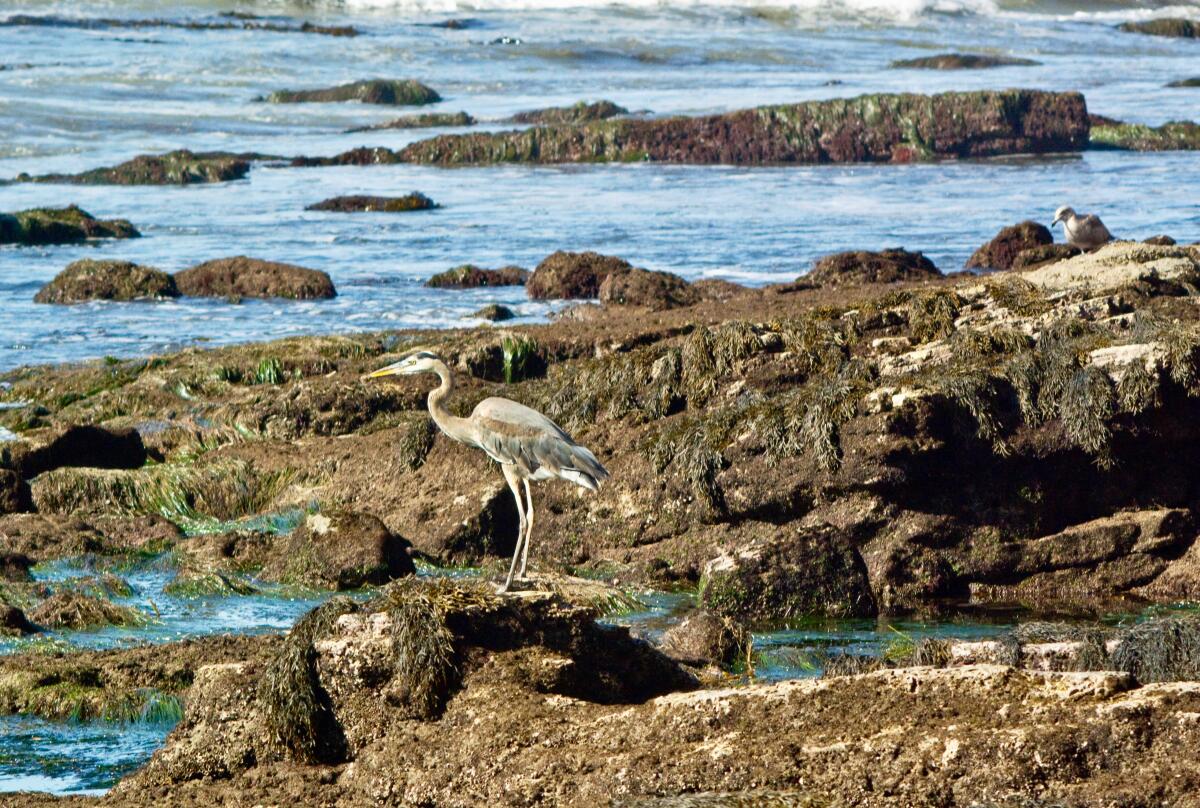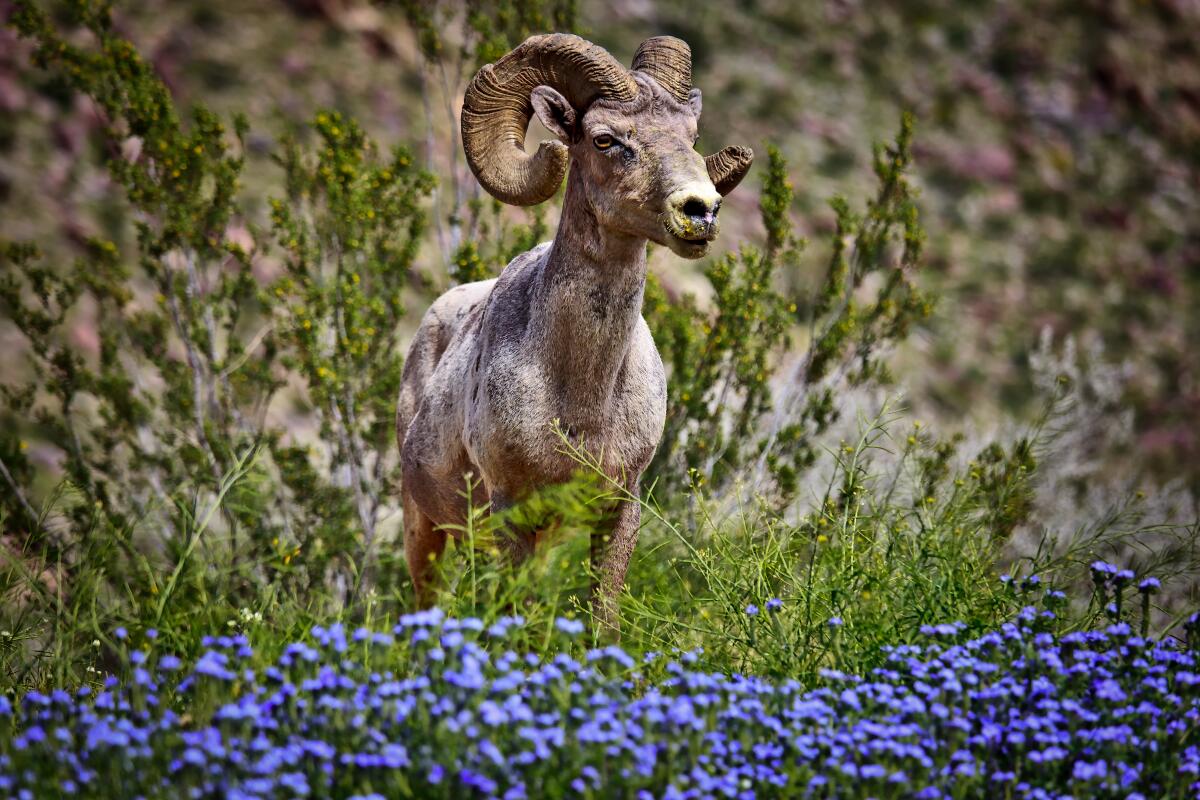Get outside in 2020. These 4 L.A. nature events make it easy

- Share via
You’re just not getting out enough. Really. Author and environmentalist Richard Louv has been warning the world about nature-deficit disorder, loosely described as a state in which humans lose their connection with the outdoors.
“An expanding body of scientific evidence suggests that nature-deficit disorder contributes to a diminished use of the senses, attention difficulties, conditions of obesity, and higher rates of emotional and physical illnesses,” Louv writes on the website of the organization he founded, the Children & Nature Network (childrenandnature.org). “Research also suggests that the nature deficit weakens ecological literacy and stewardship of the natural world.”
Indeed. The 2017 Nature of Americans report surveyed 12,000 people and found that while the majority highly valued contact with the natural world, half said they spent five hours or less in nature each week — and that their children spent three times as many hours with computers and TV screens as they did playing outside.
The good news? You can boost your bond with the outdoors right in your geographical backyard. For those who need a fresh start, or even a reboot, here are ways to connect with nature that could forge healthy habits that last a lifetime.

Like a hawk
Nest-watchers wanted, no experience necessary. The 2020 Raptor Survey is looking for volunteers to help track the mating cycles of hawks, owls and kestrels by watching their nests over time. “We need nest watchers for every stage of development, from nest building to incubation to hatchlings to fledglings,” says Courtney McCammon, co-manager of the project in and around Griffith Park.
The survey offers a way to experience firsthand the life cycle of raptors. Each volunteer (you can ask to be paired up) is assigned to a nest and visits every few weeks to record all that happens until the end of June, when most hatched chicks have left the nest.
There are about 200 nests in the study area, which includes Griffith Park and nearby canyons, Atwater Village, parts of the San Fernando Valley and Debs Park.
Beginners are welcome. “I love that one of the most important aspects of the program is that it’s a citizen science project,” McCammon says.
You’ll need to bring a pair of binoculars and attend a volunteer training session to participate. Sessions are held 9 a.m. to noon Feb. 1 and Feb. 9 at the Ranger Visitor Center Auditorium in Griffith Park.
Info: bit.ly/raptorsurvey2020 or email griffithparkraptors@gmail.com
Into the pool

You won’t see creatures that hang out in Southern California’s tide pools unless you go looking for them. It’s a great way to discover species you may have never seen before, such as limpets, crabs, anemones, sea hares, urchins and sea stars, and a good outing for families with children of all ages.

For those who would like a guide, the Cabrillo Marine Aquarium in San Pedro can help. Free tide pool walks that last about an hour and a half start with a slide show to educate you about sea creatures and their habitat. Then a naturalist will take you to nearby tide pools to have a look and help you identify what’s within. Upcoming walks are set for Jan. 11, 12, 19 and 25; and Feb. 8 and 9; for Spanish speakers, Jan. 12 and Feb. 9.
Info: bit.ly/tidepools2020
Counting sheep

Bighorn sheep in SoCal’s local mountains aren’t easy to spot. But you might get lucky on the annual California Department of Fish and Wildlife‘s ground survey in the San Gabriel Mountains. Volunteers are recruited to use spotting scopes and binoculars to count the number of sheep and where they’re located (sorry to say, no guarantee you’ll see one during the survey, but you’ll experience their backcountry habitat firsthand).
The survey area for local bighorns starts in the east at California 39 above Azusa and spreads west to Lytle Creek near the 15 Freeway. Volunteers are limited to 200; all must register in advance and attend a Feb. 29 orientation at the Angeles National Forest office (701 N. Santa Anita Ave. in Arcadia) to receive training and an assigned search area. The boots-on-the-ground survey takes place March 1.
Online registration is expected to start in mid-January; check the state agency’s website for updates.
Info: wildlife.ca.gov
Fish finding

You can be part of an effort to monitor the habitat of fish, invertebrates and plankton in one of Southern California’s richest coastal ecosystems. During monthly low tides, volunteers collect and identify species at the Back Bay Science Center in Newport Beach.
The idea is to add data to the study of the coastal zone and changes in the local habitat. Volunteers are trained to help with trawl nets to find bottom-dwellers, beach seines to survey shoreline creatures, mud sampling devices and plankton nets.
Inventory events are held during low tides on Jan. 11, Feb. 8, March 7, April 11, May 9 and other dates. Each event is limited to 30 volunteers, ages 13 and older, who must register in advance. Sessions begin at 8:15 a.m. and run from 8:30 a.m. to 12:30 p.m. Volunteers should dress for wet and muddy conditions. Sign up by contacting education program coordinator Robin Madrid, robin.madrid@wildlife.ca.gov
Info: bit.ly/marinelifeinventory
More to Read
Sign up for The Wild
We’ll help you find the best places to hike, bike and run, as well as the perfect silent spots for meditation and yoga.
You may occasionally receive promotional content from the Los Angeles Times.











